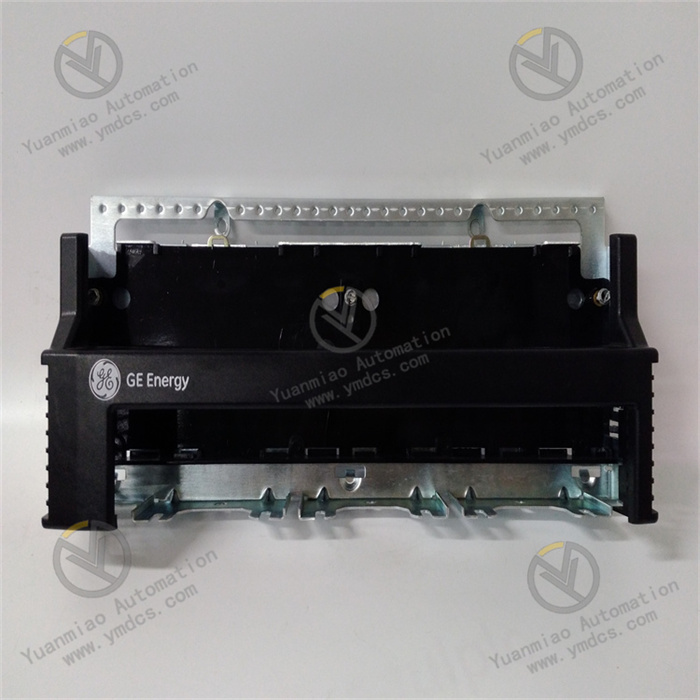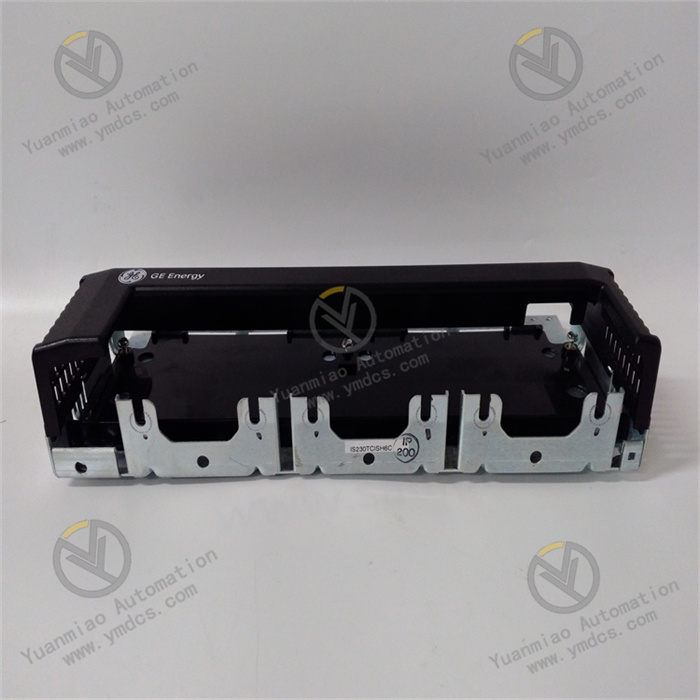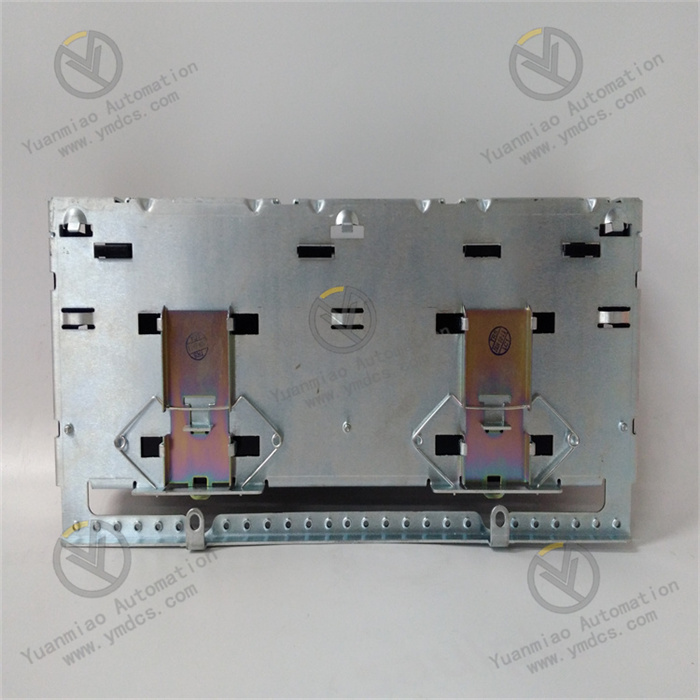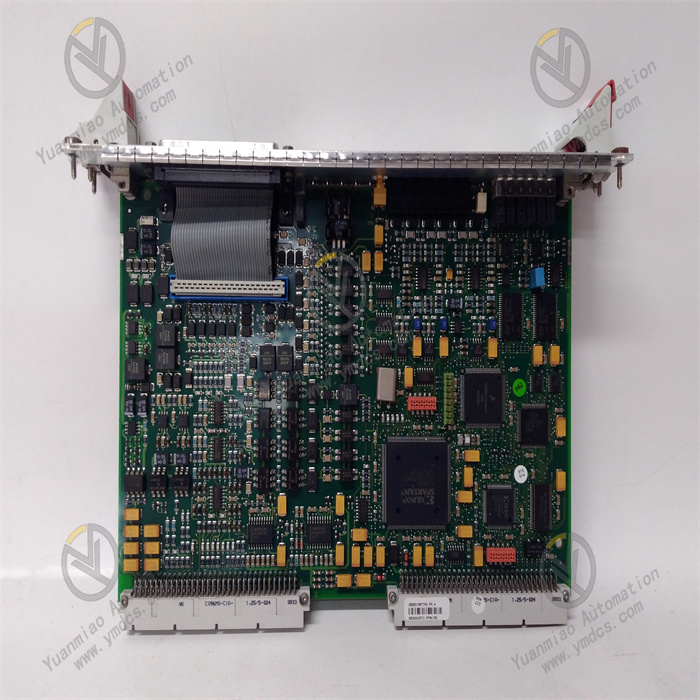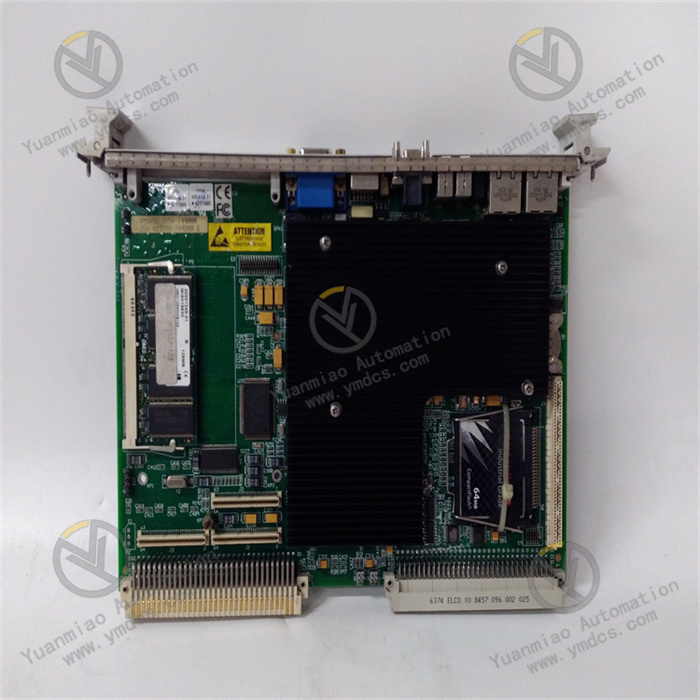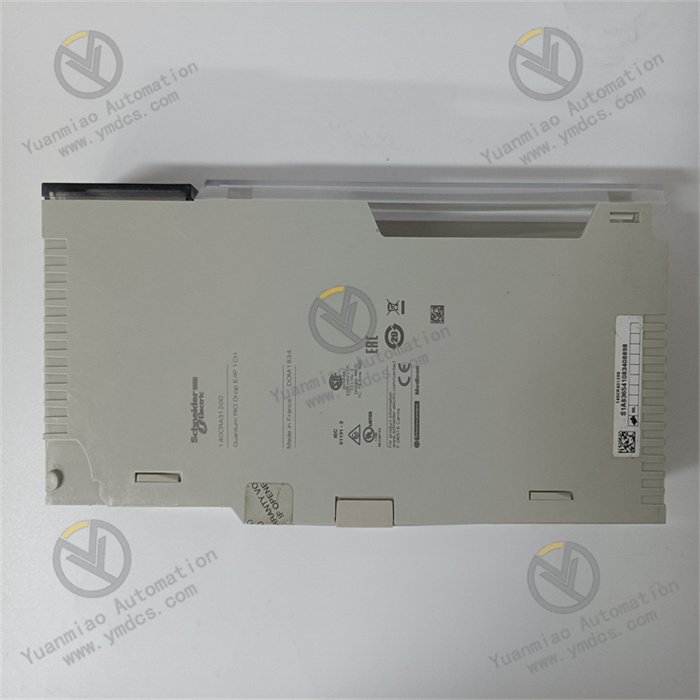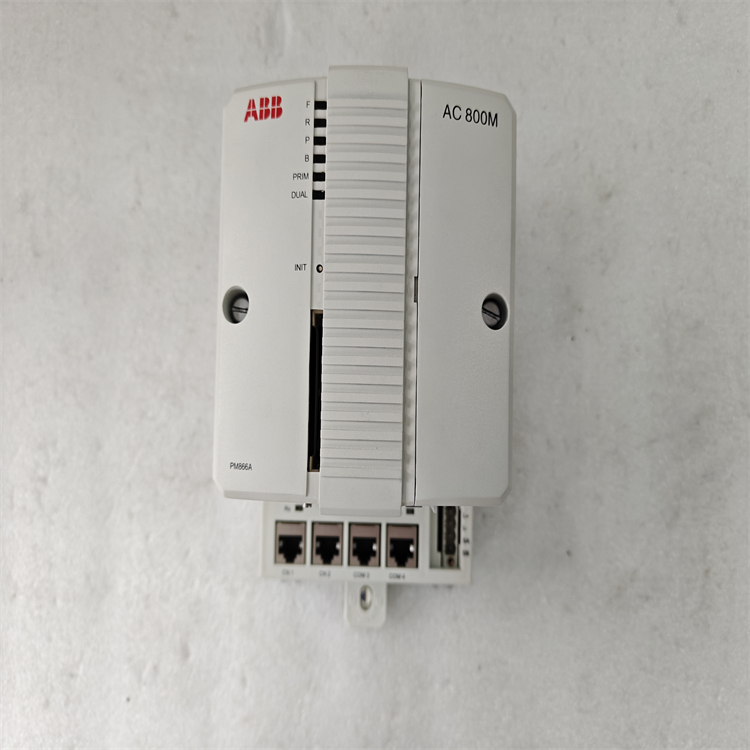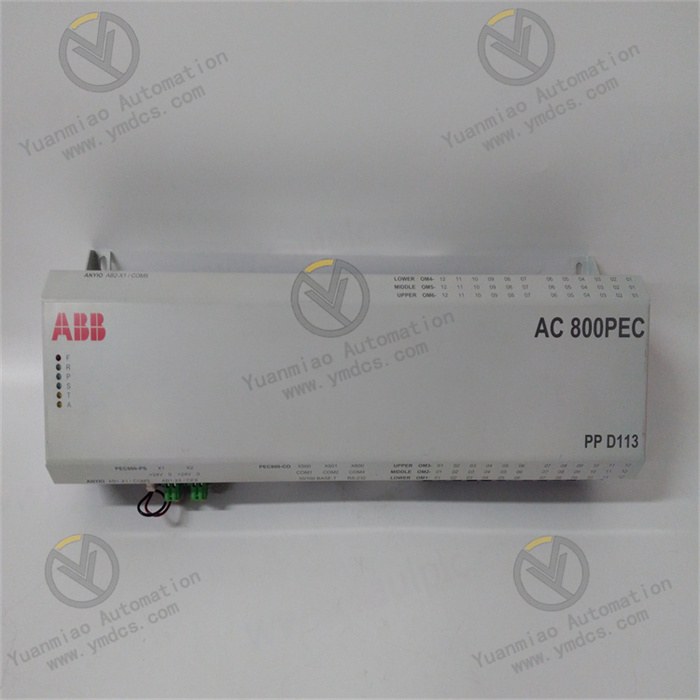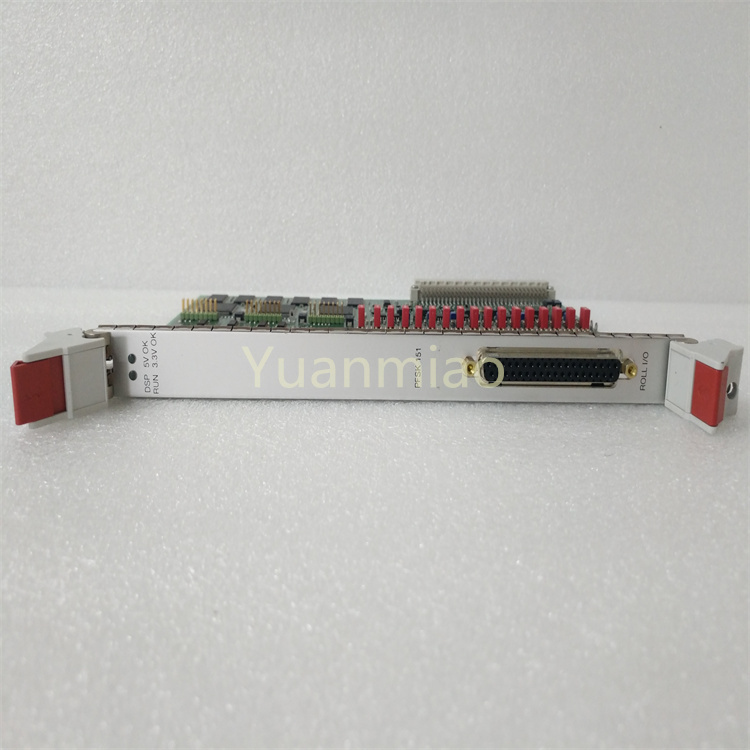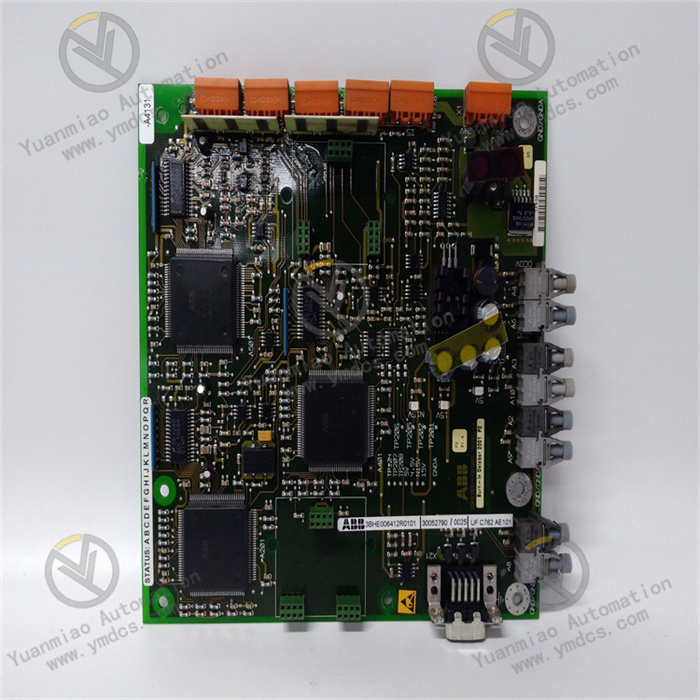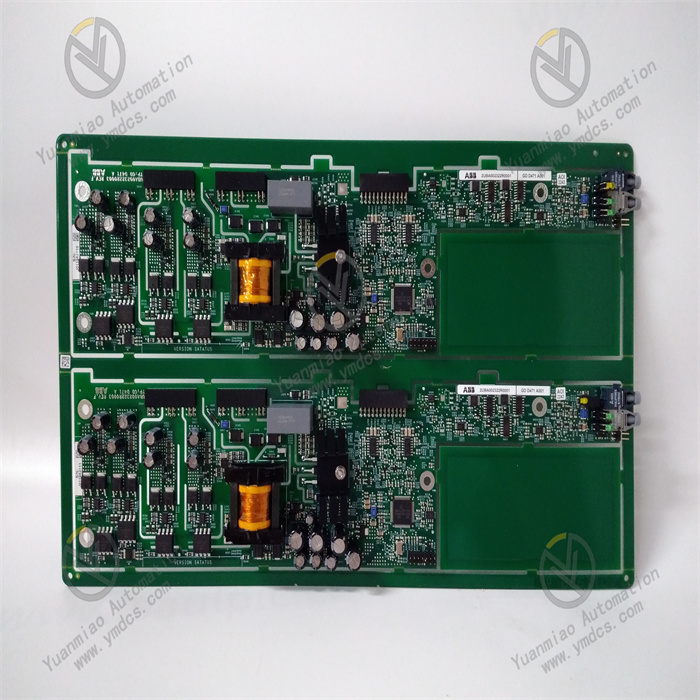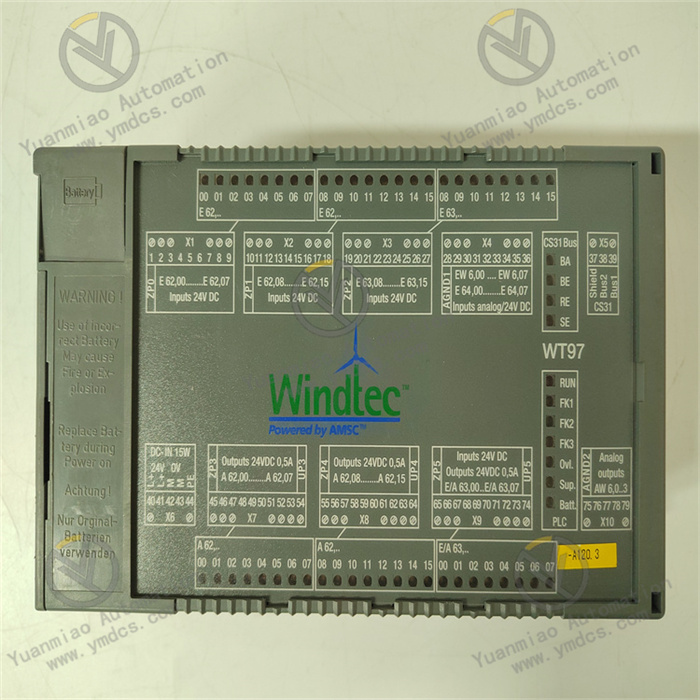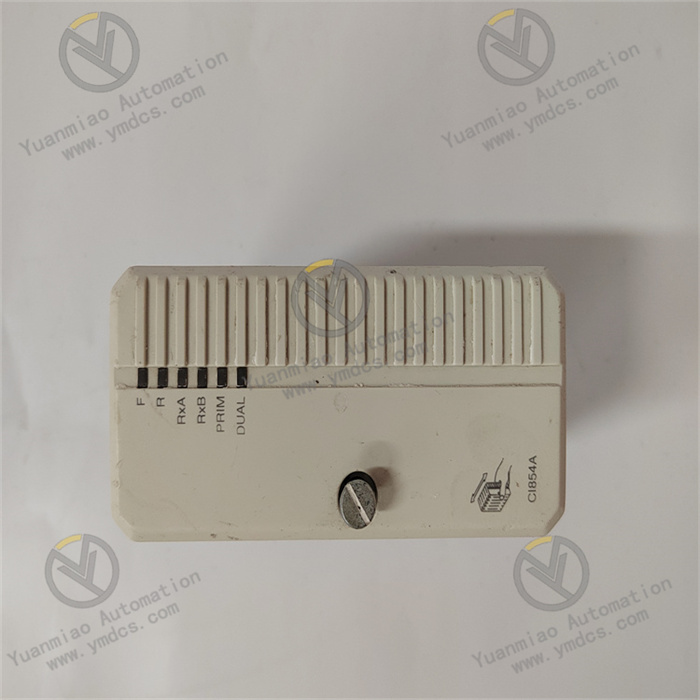Description
GE IS230TCISH6C
I. Overview
The GE IS230TCISH6C is a control interface module and a key interface component of the Mark VIe series control system. It is tailor-designed for the precision control scenarios of gas turbines, steam turbines, and other large rotating machinery. Adopting a highly integrated industrial-grade hardware architecture, this module integrates multi-channel signal acquisition, high-speed data processing, precise control output, and enhanced anti-interference design into one. It enables real-time monitoring of operating parameters of rotating machinery, efficient execution of control commands, and dynamic feedback of system status.
II. Functional Features
As a dedicated interface module for rotating machinery control scenarios, the GE IS230TCISH6C deeply integrates GE's core technical accumulation in the industrial control field, with the following core functional features:
- Multi-channel High-precision Signal Acquisition:Equipped with 12 analog input channels, it supports the acquisition of 4-20mA DC standard signals and PT100 RTD (Resistance Temperature Detector) signals. It can accurately capture key operating parameters of turbines, such as rotational speed, vibration, bearing temperature, fuel pressure, and steam flow. The analog acquisition accuracy reaches ±0.05% FS, and the sampling refresh rate is increased to 200Hz, enabling rapid response to parameter fluctuations and providing millisecond-level precise data support for control decisions. Additionally, it is configured with 24 digital input channels (24V DC) for collecting discrete signals such as limit switch signals, solenoid valve status, and emergency stop signals. The input circuit is equipped with 2500V AC photoelectric isolation function, effectively resisting strong electromagnetic interference in industrial sites.
- Flexible and Precise Control Signal Output:It has 8 analog output channels (4-20mA DC) with an output accuracy of ±0.1% FS and a load driving capability upgraded to 600Ω. It can directly drive control components such as valve positioners and actuators, realizing fine adjustment of parameters like valve opening and fuel supply flow. Equipped with 16 digital output channels, it adopts relay output mode (rating: 3A/250V AC) and supports independent configuration as normally open or normally closed mode. These channels are used for controlling equipment start-stop, sound and light alarm output, and solenoid valve actions. The output circuit is equipped with overcurrent protection to prevent module damage caused by abnormal loads.
- High-speed Communication and System Integration Capability:It adopts GE's exclusive dual-communication architecture of Genius Bus + EtherNet/IP, with dual-port redundant communication interfaces. The maximum communication rate can reach 1Mbps, supporting master-slave communication mode and redundant link switching to ensure real-time and reliable data transmission. It can be directly connected to the Mark VIe control system to realize data interaction with the main controller and other interface modules. Meanwhile, it supports compatibility with general industrial protocols such as Modbus RTU and Profinet through a protocol conversion gateway, meeting the cross-platform integration needs of third-party PLCs and SCADA monitoring systems, and realizing centralized management and remote operation & maintenance of equipment operating status.
- Full-dimensional Fault Diagnosis and Redundant Protection:Built with an enhanced self-diagnosis module, it continuously monitors the module's power supply status, communication link integrity, signal stability of input/output channels, and working status of internal circuits. When faults such as channel short circuit, communication interruption, or power abnormality are detected, it can trigger an alarm within 5ms, upload fault codes and detailed information through the communication interface, and light up the corresponding LED fault indicator, facilitating maintenance personnel to quickly locate problems. It supports module-level hot redundancy configuration. The main and standby modules realize real-time data synchronization through a dedicated synchronization interface. When the main module fails, the standby module automatically switches seamlessly within 8ms, ensuring uninterrupted control processes and improving system fault tolerance.
- Industrial-grade Enhanced Reliability Design:It uses components selected for a wide temperature range, with an operating temperature range of -40℃~75℃ and a storage temperature range of -55℃~85℃, adapting to extreme industrial environments such as high-temperature machine rooms and low-temperature outdoor areas. Inside the module, a modular circuit layout and independent heat dissipation cavity design are adopted. The heat sink is closely attached to power components, and combined with an intelligent temperature-controlled fan (automatically activated when the temperature ≥50℃), it effectively controls the temperature rise of core components. The housing is made of flame-retardant aluminum alloy with an IP20 protection rating. It has vibration resistance (5-500Hz, 1.5g acceleration) and impact resistance (15g, 11ms) capabilities, and complies with the IEC 61000-6-2/4 industrial electromagnetic compatibility standard. Its Mean Time Between Failures (MTBF) exceeds 180,000 hours.
- Convenient Configuration and Operation & Maintenance Management:It supports parameter configuration, channel function configuration, control logic programming, and fault diagnosis through GE's dedicated ToolboxST configuration software. The software has a built-in library of dedicated function blocks for rotating machinery control (such as rotational speed PID adjustment, load distribution, and vibration threshold judgment), and drag-and-drop programming reduces development difficulty. The front of the module is equipped with a 2.4-inch LCD display and 6 operation buttons, which can display real-time channel parameters, module operating status, and fault information locally, and support local parameter fine-tuning and fault reset. It supports online debugging and firmware upgrading without disconnecting the system power supply, greatly improving debugging and maintenance efficiency.
III. Technical Parameters
| Parameter Category | Parameter Name | Specific Parameters | Unit |
|---|---|---|---|
| Basic Parameters | Model | GE IS230TCISH6C | - |
| Overall Dimensions (L×W×H) | 240×180×85 | mm | |
| Weight | Approximately 1.8 | kg | |
| Installation Method | Rack-mounted (compatible with GE Mark VIe standard cabinet) | - | |
| Power Supply Parameters | Power Supply Voltage | DC 24V (±10%) | V |
| Rated Power Supply Current | 4A | A | |
| Power Consumption | ≤90W | W | |
| Power Supply Redundancy | Supports dual-channel independent power input redundancy | - | |
| I/O Parameters | Analog Input Channels | 12 channels, 4-20mA DC/PT100, ±0.05% FS accuracy | Channel |
| Digital Input Channels | 24 channels, 24V DC, 2500V AC photoelectric isolation | Channel | |
| Analog Output Channels | 8 channels, 4-20mA DC, ±0.1% FS accuracy, 600Ω load | Channel | |
| Digital Output Channels | 16 channels, relay output, 3A/250V AC | Channel | |
| Isolation Voltage | 2500V AC (mutual isolation between input/output/power) | V | |
| Sampling Refresh Rate | 200Hz (analog input), 1ms (digital input) | Hz/ms | |
| Communication & Reliability Parameters | Communication Interfaces | 2 Genius Bus + 1 EtherNet/IP, supporting redundancy | Channel |
| Communication Rate | Genius Bus: 1Mbps; EtherNet/IP: 100Mbps | bps | |
| Operating Temperature Range | -40~75 | ℃ | |
| Mean Time Between Failures (MTBF) | ≥180,000 | Hour |
IV. Working Principle
Based on the closed-loop workflow of "signal acquisition - data processing - logic calculation - command output - communication interaction - fault protection", the GE IS230TCISH6C realizes efficient collaborative control between the Mark VIe control system and the rotating machinery itself. The specific working principle is as follows:
- Multi-type Signal Acquisition Stage:Sensor signals from the rotating machinery (such as 4-20mA signals from speed sensors, PT100 signals for bearing temperature, and 24V DC signals from limit switches) are connected to the corresponding input channels. The analog input channels have built-in high-precision signal conditioning circuits, which filter, amplify, linearize, and perform cold-junction compensation (exclusive for PT100 signals) on the signals to eliminate on-site electromagnetic interference and temperature drift effects. Then, a 16-bit high-precision A/D converter converts the analog signals into digital signals. The digital input channels are isolated by a photoelectric isolation circuit and shaped by a Schmitt trigger to ensure signal integrity.The collected digital signals are transmitted to the core control unit (adopting a GE-customized 32-bit industrial MCU) via the internal high-speed data bus, completing the signal acquisition process. The analog acquisition delay is ≤5ms, and the digital response time is ≤1ms.
- Data Processing and Logic Calculation Stage:The core MCU calibrates and scales the collected digital signals, converting the raw data into actual physical quantities (e.g., converting 4-20mA signals into 0-3000rpm speed values, and PT100 signals into -20~400℃ temperature values). Then, based on the control logic issued by the Mark VIe main controller (such as speed PID adjustment algorithm and load distribution strategy) and combined with real-time collected parameters, it performs calculations to generate precise control commands. For example, when the turbine speed is lower than the set value, an analog command to increase the opening of the fuel supply valve is output after calculation; when the vibration value exceeds the threshold, a digital command to trigger an alarm and a load reduction control signal are generated.At the same time, the MCU calls the self-diagnosis program to continuously monitor parameters such as power supply voltage, communication link signals, and input/output channel current, and compares them with preset thresholds. If an abnormality is detected, it immediately generates fault information and marks the fault type.
- Control Command Output Stage:The control commands generated by the MCU are transmitted to the output channel circuit: the analog commands are converted into 4-20mA standard signals by a 16-bit D/A converter, amplified by a power drive circuit, and then output to actuators (such as valve positioners) to adjust the actuator actions; the digital commands control the relay to close/open via a relay drive chip, outputting switch signals to the controlled equipment (such as alarm lights and fuel pumps).The output channel has built-in overcurrent and short-circuit detection circuits. When the output current exceeds 3A or a short circuit occurs, the output circuit is quickly cut off and locked, and fault information is reported simultaneously; after the fault is eliminated, the output can be restored by software or local button reset.
- Communication Interaction and Data Synchronization Stage:The module establishes a redundant communication link with the Mark VIe main controller through the Genius Bus interface, periodically uploading collected real-time parameters, module operating status, and fault information, while receiving control logic, parameter setting values, and other commands issued by the main controller. The communication cycle can be configured as 1-10ms. The EtherNet/IP interface is used for communication with HMI or remote monitoring platforms, realizing visual display of operating data and remote control.In redundant configuration, the main and standby modules realize real-time synchronization of collected data, control commands, and operating status through a dedicated synchronization interface. The main module sends a heartbeat signal every 1ms, and the standby module continuously monitors the status of the main module to ensure data consistency.
- Redundancy Switching and Fault Handling Stage:When the main module fails (such as communication interruption, power failure, or core circuit abnormality), the standby module detects the loss of the heartbeat signal or fault information within 8ms, immediately switches to the working state, and takes over all control output and communication tasks to ensure uninterrupted control processes. The faulty module automatically enters the fault isolation state to avoid affecting system operation.While the fault information is uploaded to the control system through the communication interface, the module's local LCD display shows the fault code and cause, and the corresponding LED indicator flashes to alarm. Maintenance personnel can troubleshoot faults through configuration software or local operations.
V. Common Faults and Troubleshooting Methods
| Fault Phenomenon | Fault Code | Possible Causes | Troubleshooting Methods | Precautions |
|---|---|---|---|---|
| No response after module power-on, power indicator not on | None | 1. Power supply not connected or terminal loose; 2. Power voltage out of range (<21.6V or >26.4V DC); 3. Both dual-channel power supplies faulty; 4. Internal power module burned out; 5. Power fuse blown | 1. Check power wiring, re-plug and fasten terminals; 2. Measure power voltage with a multimeter to ensure it is within 24V±10%; 3. Switch to the standby power supply and observe if the module starts; 4. If there is still no response after replacing the power supply, contact GE after-sales to inspect the power module; 5. Remove the module housing and replace the fuse with the same specification (15A/250V AC) | Before replacing the fuse, locate the short-circuit point; use special tools to remove the housing to avoid damaging internal circuits; dual-channel power supplies must be connected to independent circuits to ensure redundancy effectiveness |
| Large deviation or fluctuation of analog input data | ERR-01 (Analog Input Fault) | 1. Loose or poor contact of sensor wiring; 2. Sensor fault causing abnormal signals; 3. Unshielded input cable or poor grounding; 4. Faulty signal conditioning circuit; 5. Lost module calibration parameters | 1. Check the wiring between the sensor and the module, re-fasten terminals; 2. Connect a standard signal source (e.g., 4-20mA generator) to the channel to verify if the data is normal; replace the sensor if abnormal; 3. Replace with shielded twisted-pair cable and ensure single-point grounding of the shield; 4. Contact GE after-sales to inspect the signal conditioning circuit; 5. Re-calibrate the corresponding channel via ToolboxST software | A standard signal source with accuracy ≥0.01% is required for calibration; multi-point grounding of the shield is prohibited to avoid forming a ground loop |
| Communication interruption, unable to interact with the main controller | ERR-03 (Communication Fault) | 1. Damaged communication cable or reversed A/B wires; 2. Mismatched communication parameters (address, baud rate); 3. Faulty communication port of the main controller; 4. Damaged module communication interface; 5. Both redundant links faulty | 1. Replace with a dedicated shielded cable for Genius Bus and verify the wiring sequence; 2. Check communication parameters via configuration software to ensure consistency with the main controller; 3. Switch to the standby communication port of the main controller; 4. Replace the module communication interface; if the fault persists, contact after-sales for repair; 5. Check redundant communication links and repair faulty links | The module must be restarted after modifying communication parameters; a 120Ω matching resistor must be connected to the end of the Genius Bus; communication cables must be routed away from high-voltage cables |
| No analog output signal, actuator not working | ERR-02 (Analog Output Fault) | 1. Loose or broken output wiring; 2. Faulty actuator or load exceeding the rated value; 3. Short circuit in the output channel triggering protection; 4. Faulty D/A converter; 5. Damaged output drive circuit | 1. Check output wiring and re-fasten terminals; 2. Disconnect the actuator, measure the module's output signal with a multimeter; repair the actuator if the signal is normal; 3. Locate and repair the short-circuit point, then reset the module via software; 4. Contact GE after-sales to inspect the D/A converter; 5. Have professional engineers replace the drive circuit components | The actuator load must not exceed 600Ω; the load must be disconnected when measuring the output signal to avoid affecting measurement accuracy |
| Redundancy switching failure, standby module not taking over | ERR-05 (Redundancy Fault) | 1. Unconnected or loose redundant communication cable; 2. Incorrect redundancy parameter configuration; 3. Standby module not powered on or faulty; 4. Faulty redundancy control circuit; 5. Inconsistent firmware versions of main and standby modules | 1. Check redundant cable connections and re-fasten terminals; 2. Verify redundancy parameters via configuration software to ensure correct configuration of main/standby roles and addresses; 3. Check the power supply and status of the standby module to eliminate single-module faults; 4. Contact GE after-sales to inspect the redundancy control circuit; 5. Upgrade the firmware of the main and standby modules to the same version | Firmware upgrade must be performed when the system is shut down; the main and standby modules must be of the same model and batch; redundancy parameters must be synchronized to the main and standby modules after modification |


